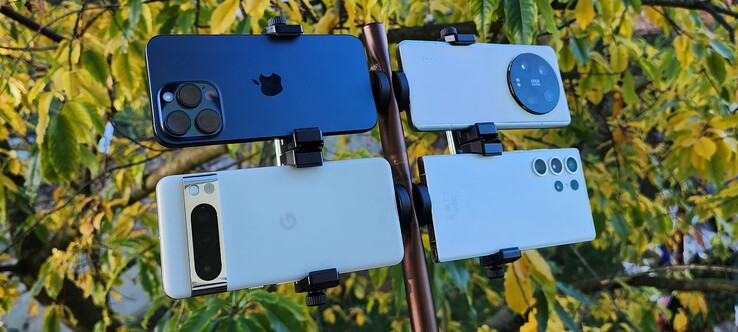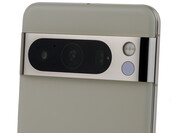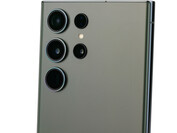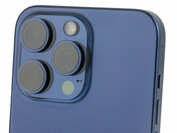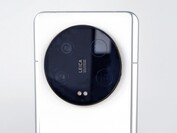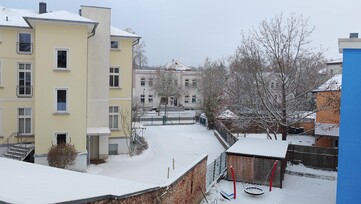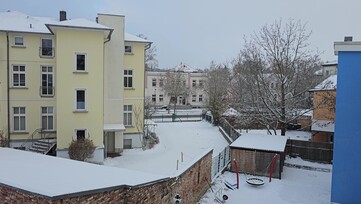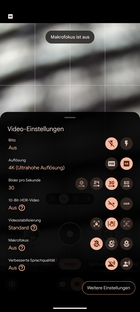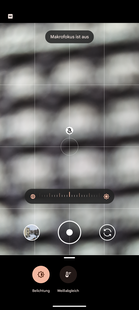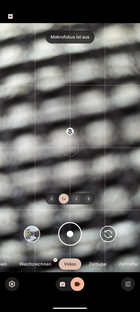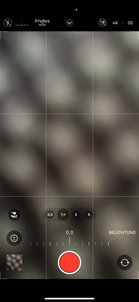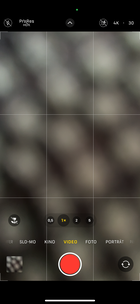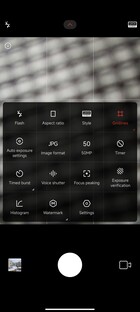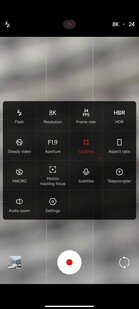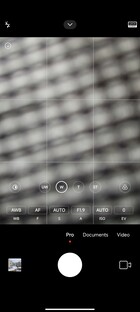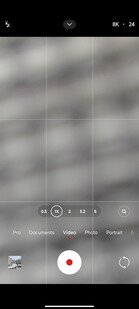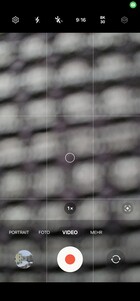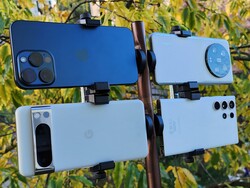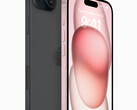The best phones of 2023: Video test - The iPhone is (no longer) the reference in many areas
After testing the current camera elites in our detailed review dealing with photo quality, now it is time to take a look at how well the flagship smartphones of 2023 perform when it comes to recording video. Our last video test showed that the Galaxy S23 Ultra and the iPhone 14 Pro Max were largely on par in terms of video recording quality.
As the competition from Google now features new camera sensors, it will be interesting to see whether the Pixel 8 Pro can now catch up with the best of the best. However, Xiaomi has released its Ultra model which, compared to our video comparison test featuring the Xiaomi 13 Pro, has also been given an update, potentially leading to a thrilling fight between all the phones.
In the following table, we have put together the specs of the back camera modules on the four flagship smartphones in this test, including their video output in frames per second:
| Samsung Galaxy S23 Ultra | Google Pixel 8 Pro | Xiaomi 13 Ultra | Apple iPhone 15 Pro Max | |
|---|---|---|---|---|
| Main camera | 200 MPix (f/1.7, OIS, 23 mm, 1/1.3” sensor ISOCELL HP2) | 50 MPix (1/1.31", 1.2 µm, f/1.68, OIS, 25 mm) | 550 MPix (f/1.9, f/4.0, 23 mm, OIS, 1″ sensor Sony IMX989) | 48 MPix (f/1.78, 1/1.28", 23 mm, IOS) |
| 8K video recording | 24 fps, 30 fps | - | 24 fps | - |
| UHD video recording | 24 fps, 30 fps, 60 fps | 24 fps, 30 fps, 60 fps | 24 fps, 30 fps, 60 fps | 24 fps, 25 fps, 30 fps, 60 fps |
| 1,080p video recording | 24 fps, 30 fps, 60 fps, 120 fps, (960 fps slow motion) | 24 fps, 30 fps, 60 fps | 30 fps, 60 fps, (1,920 fps slow motion) | 25 fps, 30 fps, 60 fps, (240 fps slow motion) |
| HDR support | 1,080p, 4K24, 4K30, 4K60 | 1,080p, 4K24, 4K30 | 1,080p, 4K24, 4K30 | 1,080p, 4K24, 4K30, 4K60 |
| RAW | - | - | - | 4K30 |
| Software version | S918BXXU3BWJM | UDA1A.231105.004 | 14.0.20 | 17.1.1 |
On all four smartphones in this comparison, we are focussing on their main cameras' ability to record video. When taking a look at their tech specs, it becomes clear that the Samsung Galaxy S23 Ultra features the highest flexibility when it comes to normal video modes — its resolution (8K24, 8K30) and its fps rate (120 fps in FullHD) are both better than what the competition (consisting of the Pixel 8 Pro, Xiaomi 13 Ultra and iPhone 15 Pro Max) has to offer. However, the Samsung phone — as well as the three other test candidates — has to face some criticism for its missing 120-fps option when recording in UHD. If you use this feature a lot in your day-to-day life, then the current Sony flagship might be a better match for you. The Xperia 1 V not only supports 120 fps when recording in UHD using the main camera, but you can do this using the other two installed lenses as well.
As the additional lenses deliver worse picture quality, we won't be addressing tele lenses and ultra-wide angle lenses in this test. All four flagship smartphones allow you to switch between lenses while recording. However, the Pixel 8 Pro doesn't use a tele lens — instead, it enlarges the recording digitally. You should also note that there is quite a varying white balance depending on which lens you are using.
Video recordings using the smartphone cameras in daylight
4K video picture quality
One of the most important criteria for recording a video on a phone is surely its UHD picture quality. We have first taken a look at the back-facing cameras of all our four flagship phones in good lighting conditions, to achieve the best possible results.
While the Pixel 8 Pro shows some clear deficits when it comes to sharpness in almost every comparison video (and our still image extracted from it), the iPhone 15 Pro Max remains very inconsistent. In our horse video, we think the Apple smartphone delivered the best recording and in our third example photo (house), it did about as well as the Xiaomi 13 Ultra. However, in the other videos, it is missing some sharpness and the focus isn't always entirely right. The iPhone 15 Pro Max also shows some inaccurate color depiction, such as how the yellow-red Christmas star is displayed.
The Xiaomi smartphone features the most consistent and nicest levels of image sharpness out of the four smartphones. This is followed by the Galaxy S23 Ultra. In turn, the 13 Ultra shows exaggerated red tone saturation, leading to some subjects not looking quite as natural. The Samsung flagship seems to have the best color depiction, while the Xiaomi 13 Ultra and iPhone 15 Pro Max show better white balance.
Ex-works, HDR is deactivated on all four of the smartphones. We don't find the additional detail supplied in bright or dark image content to be truly successful with any manufacturer. The HDR option is supposed to make videos look more vivid, but the colors are heavily saturated and the white balance isn't quite as good — except for on the iPhone 15 Pro Max. With activated HDR, the Xiaomi 13 Ultra's recordings seem to have a bit of a brown tint, but at least the trees look quite natural.
8K video picture quality
Since neither the iPhone 15 Pro Max nor the Pixel 8 Pro support 8K videos, we will only be taking a look at the Xiaomi and Samsung flagships for this field. With very high-resolution images (7,680 x 4,320 pixels), it is clear that not only is the Xiaomi 13 Ultra's white balance more successful than that of the Galaxy S23 Ultra, but its image sharpness is also much nicer. The Samsung phone looks quite sharpened and the colors are somewhat dull.
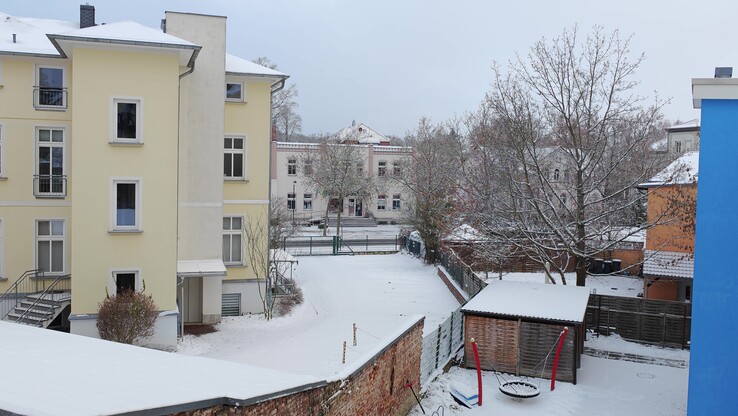
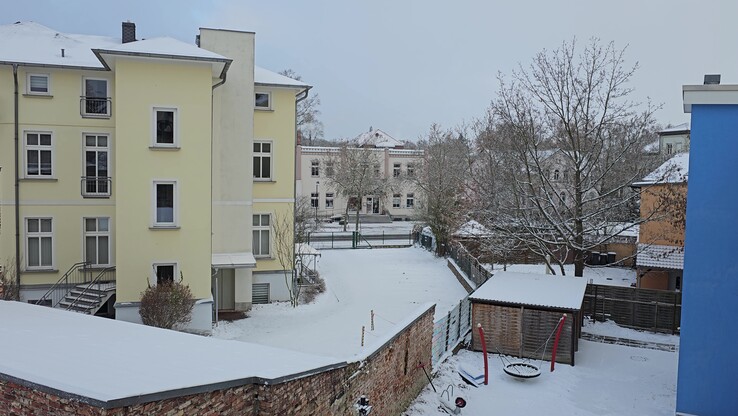
Note: In order to better differentiate image details between the individual comparison devices, all image files are stored with the corresponding photos. Click on the corresponding photos in the comparison element to call them up.
Video recordings using the smartphone cameras in low-light conditions
4K video picture quality
To rate the flagship smartphones' ability to record video in low-light conditions, we took videos using the phones' 4K30 option — but this time, at night. In their camera software, the Samsung Galaxy S23 Ultra, Xiaomi 13 Ultra and the Apple iPhone 15 Pro Max all offer you the choice to automatically reduce the frame rate in order to take in as much light as possible, leading to brighter videos without having much light at your disposal. However, we didn't use this feature so we could create the same conditions for the Pixel 8 Pro, which doesn't have this setting.
The same as during daylight, we liked the Xiaomi 13 Ultra's recordings the best when it came to picture quality. Thanks to its large 1-inch Sony sensor, the Chinese manufacturer's flagship even managed to capture quite a lot of light in the dark (example photo 2), resulting in nice-looking videos compared to the competition. It even managed to retain quite a lot of detail during our lamp recording and it was the only phone to be able to depict the delicate structure of the house facade.
The Pixel 8 Pro is far behind. In turn, Google seems to have another ace up its sleeve in the shape of its already-announced "Video Boost" function. We will just have to wait and see whether the algorithms, which run on Google's cloud servers, will drastically improve video quality in low-light conditions. At the moment, the Pixel phone delivers disappointing levels of sharpness when recording footage at night.
8K video picture quality
If you want to record 8K video in suboptimal lighting conditions, then you simply won't get much better than the Xiaomi 13 Ultra. Its recordings are a notch above the Galaxy S23 Ultra's. The Samsung flagship's sharpness is considerably worse than that of the Xiaomi 13 Ultra and its colors aren't the best, either. However, the Xiaomi flagship's cool lighting led to the yellow-tinted lamp not being depicted entirely accurately.
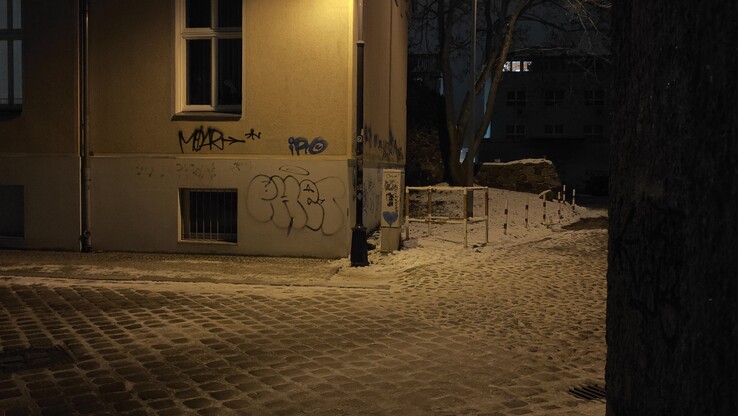
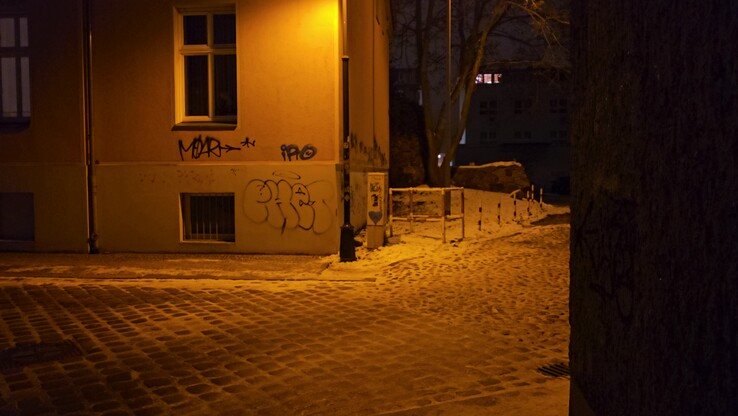
The Flagship phones' stabilization in UHD and 8K
While taking our test videos, we tried to push the phones' optical image stabilization in combination with EIS to their limits, which is why we walked quite fast and with pronounced shaking — our walk also sometimes turned into a run for a short while. All four test devices showed very good focusing speeds.
When recording in 4K30, the iPhone 15 Pro Max delivered the best work in daylight. Movement was captured well without there being any noticeable streaks on the footage — like on the Xiaomi 13 Ultra, for example. Furthermore, the recordings taken on the Xiaomi phone were a bit more restless.
Even during a fast-paced walk, the Galaxy S23 Ultra's video remained comparatively calm (about on the same level as the iPhone 15 Pro Max), however, we found its focusing to not be the best over long stretches of the video. It often appeared a bit wobbly, leading to some noticeable streaks.
The Pixel 8 Pro came a bit behind the two Android phones — contours tended to become more blurry and you could notice the autofocus "pumping" at times as soon as the depth of field changed. Its recordings also seemed the most unsteady.
During nighttime conditions, the phones painted a completely different picture. The iPhone 15 Pro Max had a much harder time keeping a good focus in low light compared to the Xiaomi 13 Ultra. The video taken on the Xiaomi flagship not only appeared calmer than on the Apple phone, but it was also less jittery and featured fewer distortions.
The Galaxy S23 Ultra delivered quite a few more artefacts than the iPhone 15 Pro Max, especially when it came to depth of field. Its autofocus often had to be adjusted — but this wasn't always a success. Pixel 8 Pro users can hope to receive the "Video Boost" function, as currently, the Google phone won't win any awards for its nighttime shots.
Using the 4K60 option during daylight led to similar results compared to the videos taken at 30 frames per second. Even so, the Xiaomi 13 Ultra lagged behind the Galaxy S23 Ultra by quite a bit. The iPhone 15 Pro Max is the clear winner in this discipline thanks to its excellent stabilization and focusing without any noticeable "pumping".
When recording in 8K, Samsung's Galaxy S23 Ultra stabilized movement much better than the Xiaomi 13 Ultra. Compared to the UHD videos, Samsung managed to get its stabilization results quite close to those of the 4K videos. In contrast, the Xiaomi flagship's test video appeared quite restless and showed quite a few image errors and distortions. However, if you keep a steady hand (as can be seen toward the end of the test videos), both smartphones are more than capable of delivering decent shots.
The flagship smartphones' video sound quality
We tested voice playback directly behind the smartphones from a distance of around 30 centimetres and indoors. While Google offered quite good noise suppression, voices sounded a little less clear on the Pixel 8 Pro than the competition. In our opinion, the Galaxy S23 Ultra and the iPhone 15 Pro Max are not that different when it comes to reproducing voices and background noise. The Xiaomi 13 Ultra picks up voices in a very direct and present manner and as a result, its sound appears pleasantly full, but there is audible noise in the background.
Next, we distanced ourselves around 1.5 metres from the test devices. Voices sounded relatively natural on the Google Pixel 8 Pro, Galaxy S23 Ultra and the Xiaomi 13 Ultra. In contrast, the iPhone 15 Pro Max — similar to its predecessor — sounded echoey and voices were played back considerably differently.
Outside, the Apple and Xiaomi were quite susceptible to wind sounds, while the Pixel 8 Pro managed to filter out this unwanted background noise quite effectively. However, the Google phone didn't just filter out wind noises — instead, other noises were dampened slightly as well, taking away from the total atmosphere of the recording. Samsung offers a good compromise with its Galaxy S23 Ultra which, for our taste, delivers the best total audio package. Even so, the differences aren't all too big between the four smartphones.
The camera smartphones' software
In terms of camera software, the Xiaomi 13 Ultra and Samsung Galaxy S23 Ultra offer the largest amount of customization options within this comparison field with their specialized Video Pro modes. You can customize a variety of different parameters on both of the flagships.
Apple may offer its ProRes function to ensure high-quality recording with low processing complexity, but users have significantly fewer options when it comes to manual optimization. However, its 10-bit recording and Dolby Vision support for all formats speak in favor of the iPhone 15 Pro Max. Google keeps things simple when it comes to its software. Pixel 8 Pro users can only adjust the most important video properties.
Verdict on our video comparison between the flagship smartphones
The question of which smartphone is the best for video recording can only be answered when you take into account how much you personally prioritize individual factors, as in comparison to photography, the differences can be huge. While the iPhone is almost dogmatically used as a clear reference for videography in certain YouTube circles, we already laid this myth to rest during our last video test. One generation later and the 15th generation of the iPhone (Pro version) still remains one of the best phones to record videos on, however, in many areas, Android delivers much better results — especially when it comes to image sharpness and low-light performance.
In turn, the iPhone 15 Pro Max can barely be beaten in all things video stabilization in daylight — especially if you have a very unsteady hand. The Apple phone neutralizes movement very well and keeps a good focus. However, the Xiaomi 13 Ultra is the clear winner when it comes to low light, where the iPhone 15 Pro Max seems to be a little inconsistent.
The Xiaomi 13 Ultra could very well be the measure of all things in terms of image quality, but unfortunately, Xiaomi has once again overdone it with its saturated red tones. It remains a matter of personal taste whether its strong video sharpness outweighs its relatively artificial-looking red tones. However, the large discrepancy between the stabilization of videos in 4K30 and 4K60 as well as 8K is also one of the Xiaomi flagship's weaknesses. In contrast, if you often record moving images at night, then you can use the 13 Ultra without hesitation — no other smartphone currently records better videos in the dark.
Which is currently the best smartphone for recording video strongly depends on your own personal use behavior.
The Galaxy S23 Ultra's results showed fewer extremes and it instead delivered consistently good results. However, Samsung artificially sharpens a lot of its footage — the same as in its photos. We noted some smaller weaknesses in terms of image stabilization compared to an iPhone 15 Pro Max as well as its picture quality in low-light conditions. Especially its 8K option with surprisingly good stabilization in daylight sets the Samsung phone apart from the competition.
The Pixel 8 Pro performed just as surprisingly weak when it came to video recording. Last year, it was a bit of a secret favorite but now, it seems that the Pixel 7 Pro's successor can't be classed as a camera elite. Its low-light performance in particular is a lot worse than that of the competition. We will just have to wait and see whether its announced AI cloud-based optimizations actually improve the phone's video quality or not.
Haven't found the perfect smartphone yet? But still on the hunt for a good camera phone. Then take a look at our list of the best photography smartphones — here, you will find a regularly updated list of the 10 best camera phones taken from our reviews.
Prices and availability at the time of testing
The Samsung Galaxy S23 Ultra can currently be found from US$899.99 on Amazon.
The Xiaomi 13 Ultra starts from around US$940.
At the moment, the iPhone 15 Pro Max can be purchased for US$1,199.99.
Last but not least, the Pixel 8 Pro can be had for about US$800.




